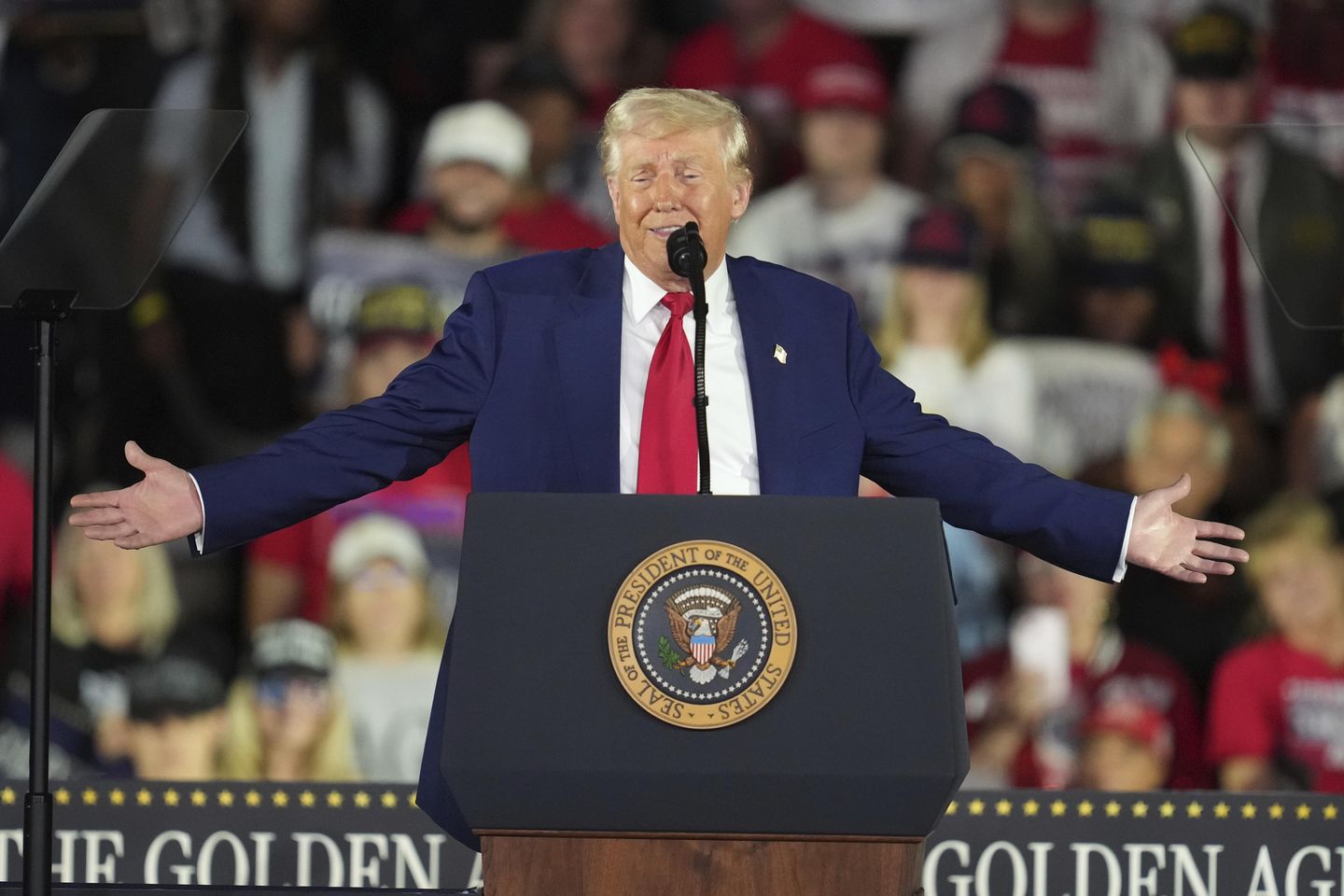
The U.S. economy shrank in the first quarter, a sobering reality check for President Trump after he celebrated big wins during his first 100 days back in the White House.
The Commerce Department’s report on gross domestic product found a 0.3% contraction versus 2.4% growth in the previous quarter.
Wall Street estimates expected 0.4% growth for the quarter, so the report may fuel concerns about a looming recession, or when output declines for two straight quarters.
It was the first quarter of negative growth since early 2022.
The White House toggled between blaming the numbers on an “overhang” from the Biden administration and pointing to a surge in pre-tariff imports that chipped away at GDP.
“So the great news about that is that’s a one-shot deal,” Trump trade adviser Peter Navarro said.
The markets reacted poorly, diving into negative territory upon opening, though two of the three major indexes rallied into positive territory by closing.
Democrats said the report is an indictment of Mr. Trump’s leadership.
The economy had been “growing until now,” only to shrink in recent months, said Senate Minority Leader Charles E. Schumer, New York Democrat.
“It’s the worst quarter in years,” he said. “Business, families and consumers are bracing themselves for the hammer blow of Donald Trump’s tariffs, and it’s sending the economy into a tailspin.”
The GDP report reflects goods and services from January through March.
The report did not capture the “Liberation Day” tariffs Mr. Trump announced at the start of April. He paused many of them a week later, though hefty levies on China remain.
Still, the GDP report period covers some of the tariffs Mr. Trump imposed earlier in the year. Consumer sentiment is down in recent surveys.
Government analysts pointed to a large uptick in imports as companies tried to avoid Mr. Trump’s sweeping tariffs. Because imports subtract from GDP, the trend may not weigh on growth in future quarters.
“Compared to the fourth quarter, the downturn in real GDP in the first quarter reflected an upturn in imports, a deceleration in consumer spending, and a downturn in government spending that were partly offset by upturns in investment and exports,” the report said.
The deceleration in consumer spending was notable and reflected the uncertainty around tariffs and the economy overall.
“The decline in GDP in the 1st quarter overstates the economy’s weakness, but it is weak,” Mark Zandi, the chief economist at Moody’s Analytics, wrote on X. “Most worrisome is the weak growth in consumer spending, and that is despite the boost to buying as consumers rushed to get ahead of the tariffs. The economy isn’t in recession, but is on the precipice.”
A report from human resource management firm ADP showed that private hiring slowed in April. Companies added 62,000 jobs for the month, down from a revised total of 147,000 in March.
The GDP report was the first since the transition from the Biden administration to the Trump administration.
During his campaign last year, Mr. Trump said he would revive an economy with rampant inflation and lackluster manufacturing. Early victories included lower egg prices and big-ticket investments in the U.S. from companies such as Apple and Nvidia.
Yet sinking GDP and investor hand-wringing around tariffs underscored the risk Mr. Trump is taking with his aggressive economic agenda.
The Dow Jones Industrial Average rallied late in the day, ending up nearly 142 points, or 0.35%, after trading in the red for most of Wednesday. The Nasdaq finished in negative territory while the S&P 500 finished on the day, though it was on track for a third straight losing month overall.
Mr. Trump pleaded for time and washed his hands of Wall Street, calling it “Biden’s Stock Market.”
“We came in on Jan. 20, so this is Biden, and you can even say the next quarter is sort of Biden because it doesn’t just happen on a daily or hourly basis,” Mr. Trump said.
The president said his tax cuts would supercharge the economy and his tariff plan would recalibrate trade in favor of a U.S. manufacturing sector that has lost jobs to overseas employers in recent decades.
He said near-term turmoil will be worth the payoff as he uses tough tactics to negotiate down trade barriers in countries that sell plenty of products to U.S. consumers but don’t buy nearly as much from American producers.
Mr. Trump opened his Cabinet meeting Wednesday by saying underlying GDP growth, absent import distortions, is strong and that his tariff system is compelling businesses to set up shop in the U.S.
He compared the U.S. favorably with China, which is getting “hammered” by falling exports during the trade war between Washington and Beijing.
“We’re talking to China, but the factories are closing all over China because we don’t want their product. We don’t want their product unless they’re going to be fair with us,” he said. “I want every country to do well, but they have to treat us fairly also.”
Likewise, Mr. Navarro said people should be patient as the White House trade agenda takes root and Congress works on a massive tax-cut bill.
“The idea that there’s a recession coming should be heavily discounted,” he said. “Because when we take into effect the tax cuts coming and the underlying strength of the economy, then I think all things … are good. So we felt really good about that [GDP] number when you fully understand it.”
Mr. Trump said he is focused on a long-term revamp of the U.S.
“Bad things were happening with our country. We’ve stemmed the tide, we’ve turned it around,” Mr. Trump said. “Over the next three years, 3½ years, we’re going to turn it around. That’s my goal: to put it in such great condition that it can’t be destroyed.”












